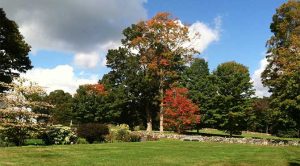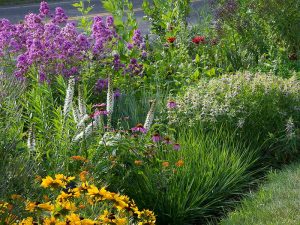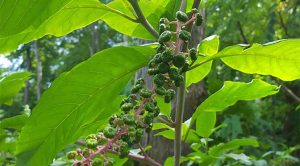It’s no secret to any gardener based in New England that the region is experiencing a significant rainfall deficit. In Connecticut, where we’re located, assessments provided by NOAA, the National Oceanic and Atmospheric Administration, for September 2016, indicate that all regions of the state are in either “extreme drought” (a deficit of 2.75” of rain or greater) or “severe drought” (a deficit of 2” to 2.74” of rain). While October delivered a few showers, we still have a lot of making up to do. The situation is the same across New England. (See for yourself by clicking here.)
In September, according to NOAA, “Abnormally dry and drought conditions continued to contract in the Midwest and intensify in the Northeast, where extreme drought developed. The unusually warmer-than-normal temperatures increased evaporative stress which exacerbated the drought conditions in the Northeast. Soils were dry, vegetation stressed, and groundwater and streamflow levels low. According to USDA statistics, topsoil moisture was short or very short (dry or very dry) in 50 percent or more of Rhode Island (100%), Massachusetts (78%), Connecticut (76%), New Hampshire (65%), and Vermont (53%); subsoil moisture was short or very short in 50 percent or more of Rhode Island (100%), Massachusetts (91%), Connecticut (80%), New Hampshire (63%), and Vermont (52%); and pasture and rangeland was in poor to very poor condition in 50 percent or more of Massachusetts (81%), New Hampshire (65%), Rhode Island (60%), Maine (59%), and Connecticut (56%).”
Massachusetts and Connecticut have been critically impacted, according to the NOAA data. “Fifteen states ranked in the driest third of the historical record for April-September, with two in the Northeast having the tenth driest, or drier, such 3-month period. These were . . . Massachusetts (at fourth driest) and Connecticut (at fifth driest). The last three April-September time periods have been drier than average for these two states.”
In southern New England, the dryness is part of a longer-term pattern. “Thirteen states ranked in the driest third of the historical record, with the severest dryness (driest ranks) persisting in southern New England — Connecticut had the fifth driest January-September and Massachusetts the seventh driest,” according to NOAA. “Four of the last five year-to-dates have been much drier than average for Connecticut.”
In forecasting trends for this winter’s weather, NOAA predicts New England’s drought conditions may improve somewhat in western parts of the region but dry conditions may persist in the east.
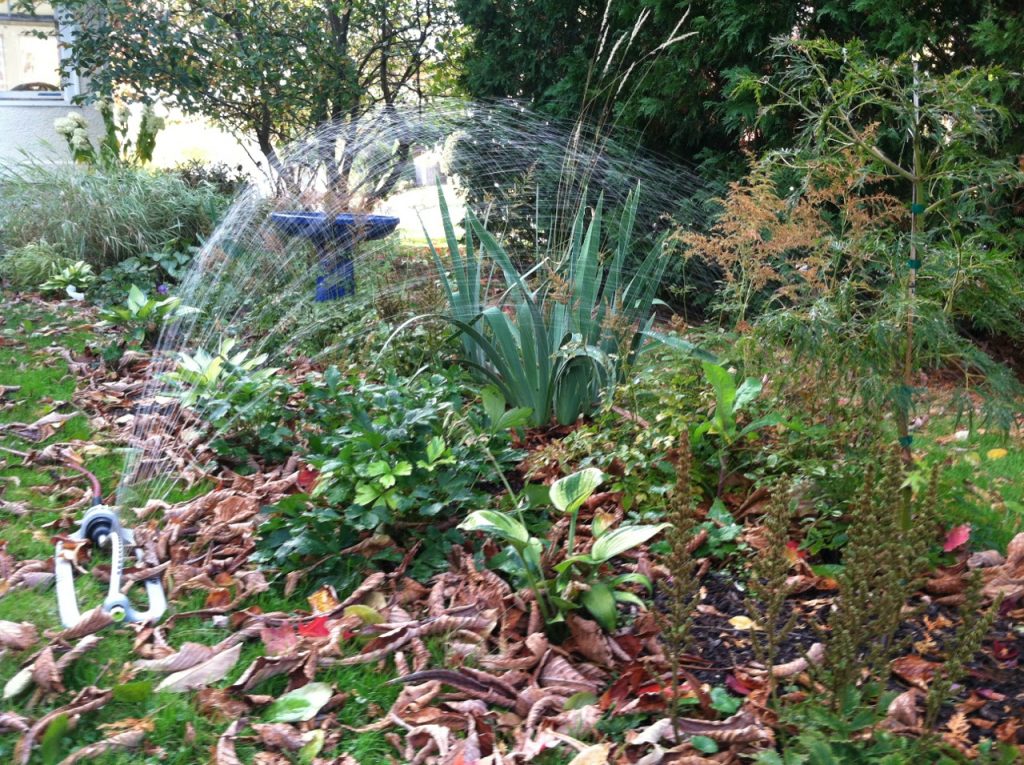
What does all of this mean for gardeners? Water. Water. Water. Unless restrictions have been imposed in your area, continue to water your gardens and any new plantings including trees and shrubs until the ground freezes hard. Plants that have been stressed by lack of water are far more vulnerable to winter kill. New plantings are at particular risk. Keep your plants hydrated by watering on a weekly basis. (Ideally, you want to water slowly – setting up a sprinkler or drip irrigation system are two ways to do it. The goal is a slow but steady discharge of water that will seep down to the roots of your plants. You want to stop watering before the ground is too saturated to absorb more. Do not overwater or plants will be discouraged from forming good root systems. Standing water might also freeze overnight creating a hazard for you and your plants.)
The ground here in Litchfield County generally freezes hard sometime after Thanksgiving so we’ll keep watering until then.
Watering Guidelines for New Plants
For best results with new plants including potted perennials, shrubs, trees and vines, give their roots a good soaking in their pots on the day before planting. (You may even stand each pot in a bucket of water for up to 30 minutes so the soil is soaked through. Remove each pot from the bucket and let it drain.) On the day you put the new plants in the ground, water them again, as needed, before and after planting.
For bareroot perennial specimens, soak the roots in water for a few hours before planting. If the root is woody (as in roses), soak for up to 12 hours. Follow directions for planting your bareroot specimen then water it in once planted.
Water Restrictions
If you live in an area where water restrictions have been imposed, you may choose to collect “grey water,” the type that’s generated by routine household rituals including bathing, brushing your teeth, washing dishes, and rinsing fruits and vegetables. As you start the shower or run the tap to rinse something or wait for hot water, collect the runoff in buckets or jars and bring it outside. Please note: While grey water that contains detergents or soaps may be used for some things, it is not recommended for watering plants. Be sure your grey water is free of shampoo, soap, toothpaste, dish detergent, grease, etc., which can potentially damage your plants or attract critters.
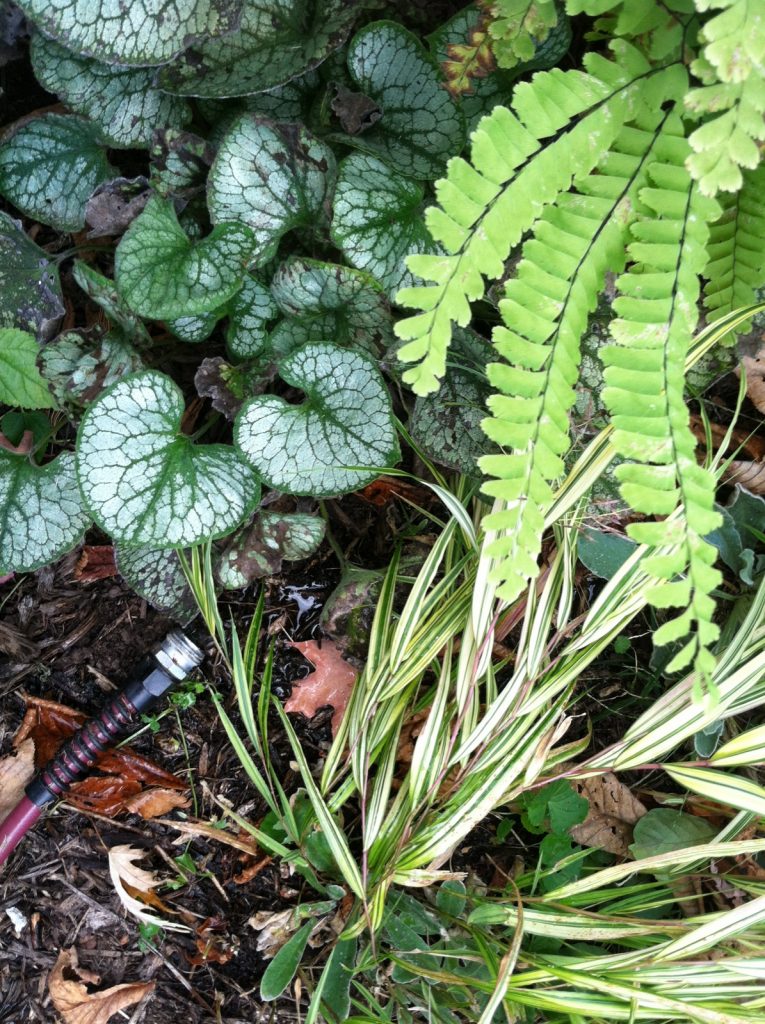
Rainfall, if we get much, is another excellent source of water. Install rain barrels below your gutter pipes or set out buckets and pails to catch whatever falls from the sky. This is a terrific practice whether or not drought conditions prevail.
Take Care of Your Hose
To prevent your hose from cracking on nights when the temperature dips below freezing, remember to discharge any water that’s trapped in it after each use.

